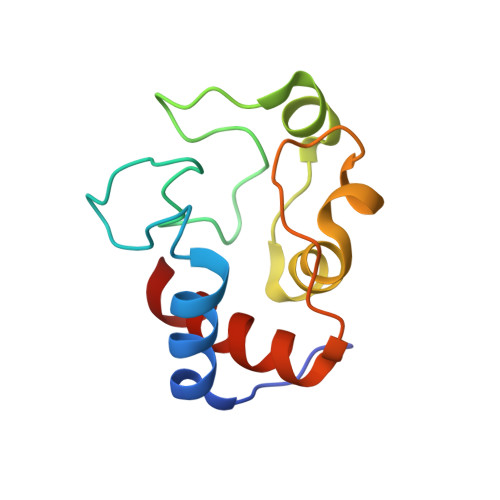Dynamics in a pure encounter complex of two proteins studied by solution scattering and paramagnetic NMR spectroscopy
Xu, X., Reinle, W., Hannemann, F., Konarev, P.V., Svergun, D.I., Bernhardt, R., Ubbink, M.(2008) J Am Chem Soc 130: 6395-6403
- PubMed: 18439013
- DOI: https://doi.org/10.1021/ja7101357
- Primary Citation of Related Structures:
2JQR - PubMed Abstract:
In the general view of protein-complex formation, a transient and dynamic encounter complex proceeds to form a more stable, well-defined, and active form. In weak protein complexes, however, the encounter state can represent a significant population of the complex. The redox proteins adrenodoxin (Adx) and cytochrome c (C c) associate to form such a weak and short-lived complex, which is nevertheless active in electron transfer. To study the conformational freedom within the protein complex, the native complex has been compared to a cross-linked counterpart by using solution scattering and NMR spectroscopy. Oligomerization behavior of the native complex in solution revealed by small-angle X-ray scattering indicates a stochastic nature of complex formation. For the cross-linked complex, interprotein paramagnetic effects are observed, whereas for the native complex, extensive averaging occurs, consistent with multiple orientations of the proteins within the complex. Simulations show that C c samples about half of the surface area of adrenodoxin. It is concluded that the complex of Adx/C c is entirely dynamic and can be considered as a pure encounter complex.
Organizational Affiliation:
Institute of Chemistry, Leiden University, P.O. Box 9502, NL-2300RA Leiden, The Netherlands.

















